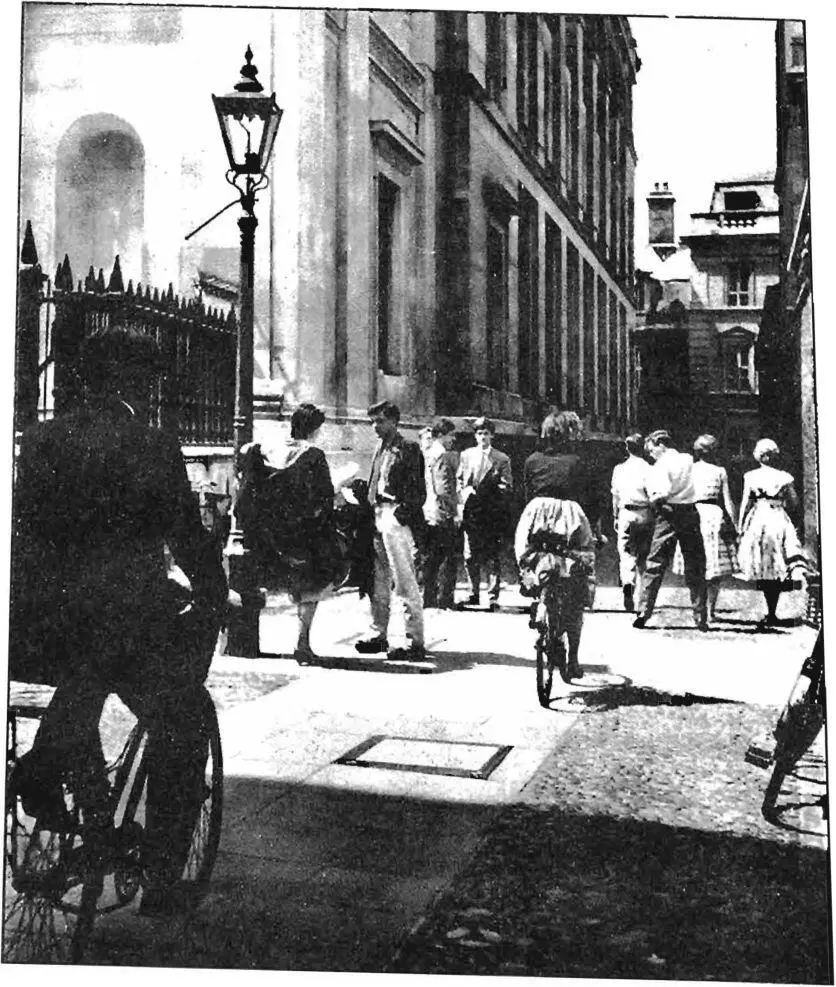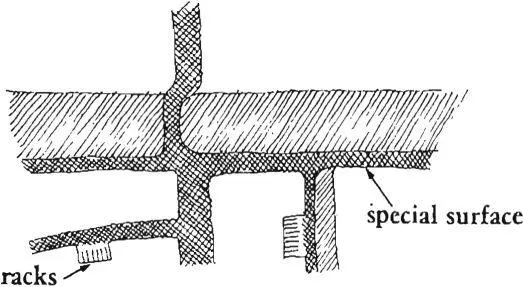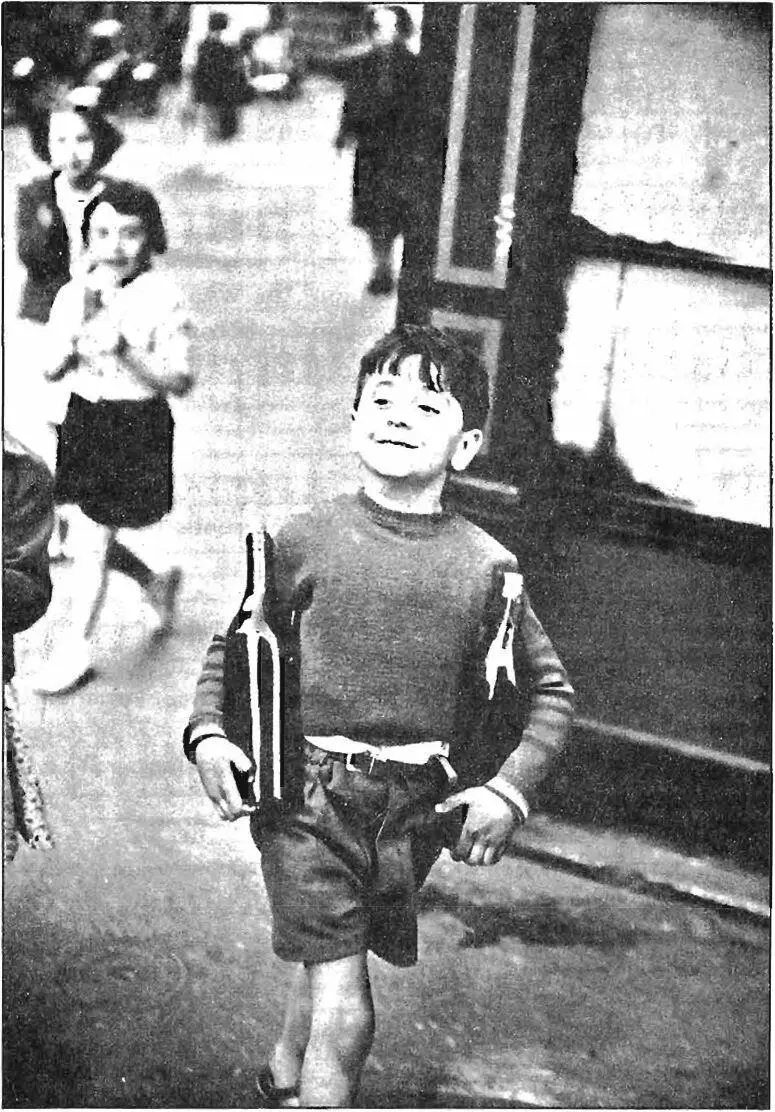Christopher alexander - A pattern language
Здесь есть возможность читать онлайн «Christopher alexander - A pattern language» весь текст электронной книги совершенно бесплатно (целиком полную версию без сокращений). В некоторых случаях можно слушать аудио, скачать через торрент в формате fb2 и присутствует краткое содержание. Жанр: Прочая научная литература, на английском языке. Описание произведения, (предисловие) а так же отзывы посетителей доступны на портале библиотеки ЛибКат.
- Название:A pattern language
- Автор:
- Жанр:
- Год:неизвестен
- ISBN:нет данных
- Рейтинг книги:3 / 5. Голосов: 1
-
Избранное:Добавить в избранное
- Отзывы:
-
Ваша оценка:
- 60
- 1
- 2
- 3
- 4
- 5
A pattern language: краткое содержание, описание и аннотация
Предлагаем к чтению аннотацию, описание, краткое содержание или предисловие (зависит от того, что написал сам автор книги «A pattern language»). Если вы не нашли необходимую информацию о книге — напишите в комментариях, мы постараемся отыскать её.
A pattern language — читать онлайн бесплатно полную книгу (весь текст) целиком
Ниже представлен текст книги, разбитый по страницам. Система сохранения места последней прочитанной страницы, позволяет с удобством читать онлайн бесплатно книгу «A pattern language», без необходимости каждый раз заново искать на чём Вы остановились. Поставьте закладку, и сможете в любой момент перейти на страницу, на которой закончили чтение.
Интервал:
Закладка:
288
| 56 BIKE PATHS AND RACKS* |
|---|
 |
289
. . . within a local transport area (ii) there is a heavy concentration of small vehicles like bikes, electric carts, perhaps even horses, which need a system of bike paths. The bike paths will play a very large role in helping to create the local transport areas, and may also help to modify looped local roads (49) and
NETWORK OF PATHS AND CARS (52).
♦J* ❖
Bikes are cheap, healthy, and good for the environment; but the environment is not designed for them. Bikes on roads are threatened by cars; bikes on paths threaten pedestrians.
In making the environment safe for bikes, the following problems must be solved:
1. Bikes are threatened where they meet or cross heavy automobile traffic.
2. They are also threatened by parked cars. Parked cars make it difficult for the bike rider to see other people, and they make it difficult for other people to see him. In addition, since the bike rider usually has to ride close to parked cars, he is always in danger of someone opening a car door in front of him.
3. Bikes endanger pedestrians along pedestrian paths; yet people often tend to ride bikes along pedestrian paths, not roads, because they are the shortest routes.
4.Where bikes are in heavy use, for instance around schools and universities, they can lay a pedestrian precinct to waste in their own way, just as cars can.
An obvious solution to these problems is to create a completely independent system of bike paths. However, it is doubtful that this is a viable or desirable solution. The study “Students on Wheels” (Jany, Putney, and Ritterj Department of Landscape Architecture, University of Oregon, Eugene, Oregon, 1972) shows that bike riders and nonbike riders want a mixed system, so long as it is reasonably safe.
We also think that it is essential for bike paths to run in streets
56 BIKE PATHS AND RACKS
and along pedestrian paths: if bikes are forced onto a separate system, it will almost certainly be violated by people taking shortcuts across the other networks. And laws which would keep bikes completely off the road and path systems would be discouraging to the already hasseled bike riders. Wherever possible, then, bike paths should coincide with roads and major pedestrian paths.
Where bike paths coincide with major roads, they must be separated from the roadway. It helps put the bike rider in a safer position with respect to the cars if the bike path is raised a few inches from the road; or separated by a row of trees.
Where bike paths run alongside local roads, parking should be removed from that side of the road; the bike surface may simply be part of the road and level with it. An article by Bascome in the Oregon Daily Emerald (October 1971) suggested that bike lanes along streets should always be on tire sunny side of the street.
Where bike paths coincide with major pedestrian paths, they should be separate from the paths, perhaps a few inches below them. Here, the change in level gives the pedestrian a sense of safety from the bikes.
Quiet paths and certain pedestrian precincts should be completely protected from bikes for the same reasons that they need to be protected from cars. This can be handled by making the bike path system bypass these places, or by enclosing these places with steps or low walls which force bike riders to dismount and walk their bikes.
Therefore:
Build a system of paths designated as bike paths, with the following properties: the bike paths are marked clearly with a special, easily recognizable surface (for example, a red asphalt surface). As far as possible they run along local roads, or major pedestrian paths. Where a bike path runs along a local road, its surface may be level with the road —if possible, on the sunny side; where a bike path runs along a pedestrian path, keep it separate from that path and a few inches below it. Bring the system of bike paths to
291
TOWNS
within ioo feet of every building, and give every building a bike rack near its main entrance.
| bike path system |
|---|
 |
Build the racks for bikes to one side of the main entrance, so that the bikes don’t interfere with people’s natural movement in and out—main entrance (iio), and give it some shelter, with the path from the racks to the entrance also under shelter— arcades (119); keep the bikes out of quiet walks and quiet gardens—quiet backs (59), garden wale (173). . . •
292
57 CHILDREN IN THE CITY
 |
| 293 |
. . . roads, bike paths, and main pedestrian paths are given their position by parallel roads (23), promenade (31), looped LOCAL ROADS (49), GREEN STREETS (51), NETWORK OF PATHS and cars (52), bike paths and racks (56). Some of them are safe for children, others are less safe. Now, finally, to complete the paths and roads, it is essential to define at least one place, right in the very heart of cities, where children can be completely free and safe. If handled properly, this pattern can play a great role in helping to create the network of learning (18).
If children are not able to explore the whole of the adult world round about them, they cannot become adults. But modern cities are so dangerous that children cannot be allowed to explore them freely.
The need for children to have access to the world of adults is so obvious that it goes without saying. The adults transmit their ethos and their way of life to children through their actions, not through statements. Children learn by doing and by copying. If the child’s education is limited to school and home, and all the vast undertakings of a modern city are mysterious and inaccessible, it is impossible for the child to find out what it really means to be an adult and impossible, certainly, for him to copy it by doing.
This separation between the child’s world and the adult world is unknown among animals and unknown in traditional societies. In simple villages, children spend their days side by side with farmers in the fields, side by side with people who are building houses, side by side, in fact, with all the daily actions of the men and women round about them: making pottery, counting money, curing the sick, praying to God, grinding corn, arguing about the future of the village.
But in the city, life is so enormous and so dangerous, that children can’t be left alone to roam around. There is constant danger from fast-moving cars and trucks, and dangerous machinery. There is a small but ominous danger of kidnap, or rape,
57 CHILDREN IN THE CITY
or assault. And, for the smallest children, there is the simple danger of getting lost. A small child just doesn’t know enough to find his way around a city.
The problem seems nearly insoluble. But we believe it can be at least partly solved by enlarging those parts of cities where small children can be left to roam, alone, and by trying to make sure that these protected children’s belts are so widespread and so far-reaching that they touch the full variety of adult activities and ways of life.
Читать дальшеИнтервал:
Закладка:
Похожие книги на «A pattern language»
Представляем Вашему вниманию похожие книги на «A pattern language» списком для выбора. Мы отобрали схожую по названию и смыслу литературу в надежде предоставить читателям больше вариантов отыскать новые, интересные, ещё непрочитанные произведения.
Обсуждение, отзывы о книге «A pattern language» и просто собственные мнения читателей. Оставьте ваши комментарии, напишите, что Вы думаете о произведении, его смысле или главных героях. Укажите что конкретно понравилось, а что нет, и почему Вы так считаете.












